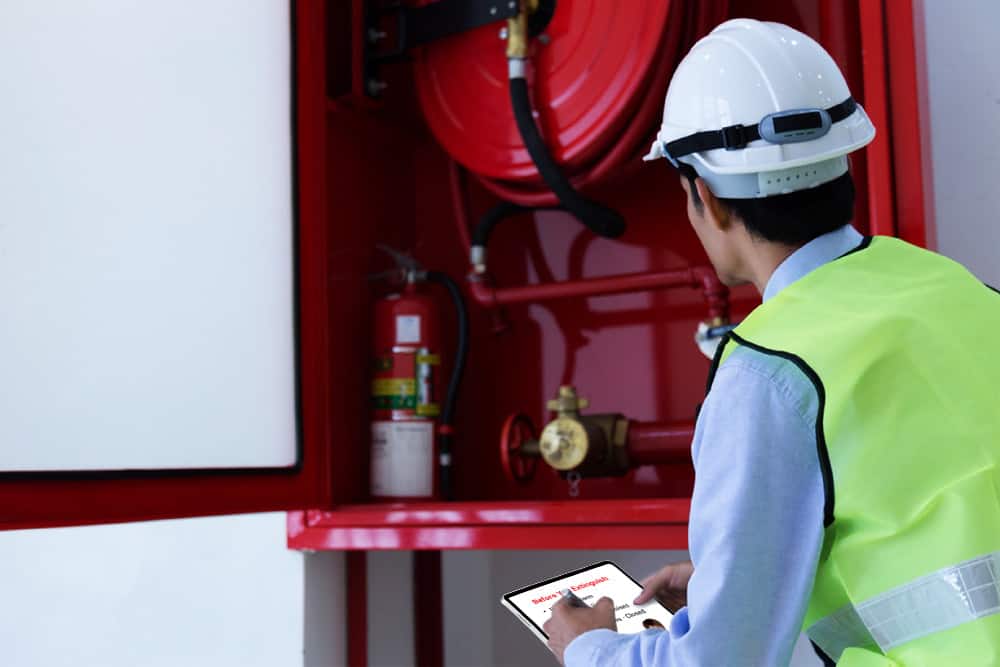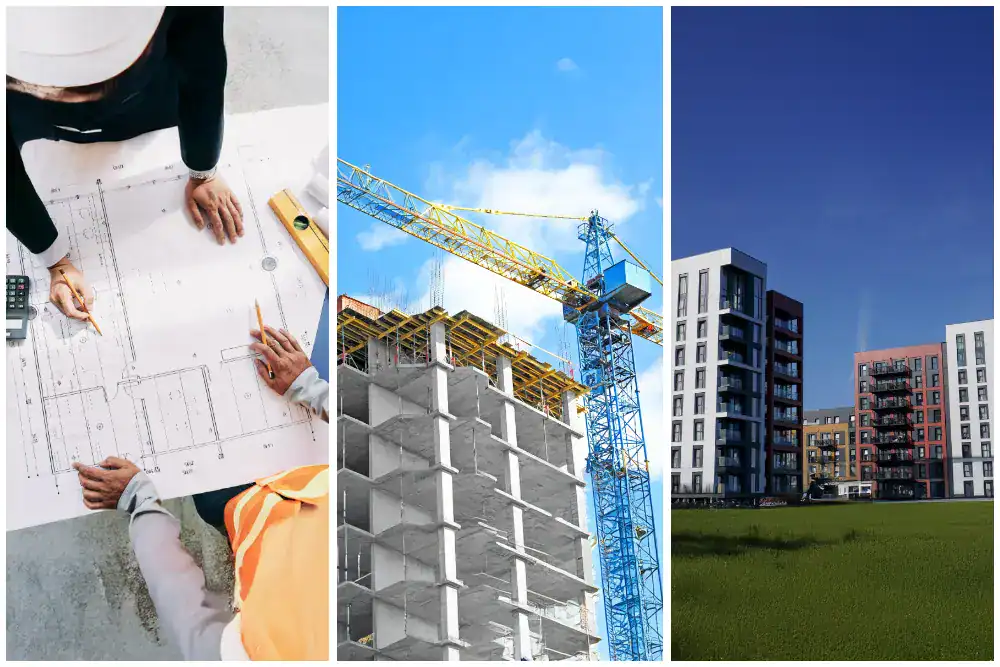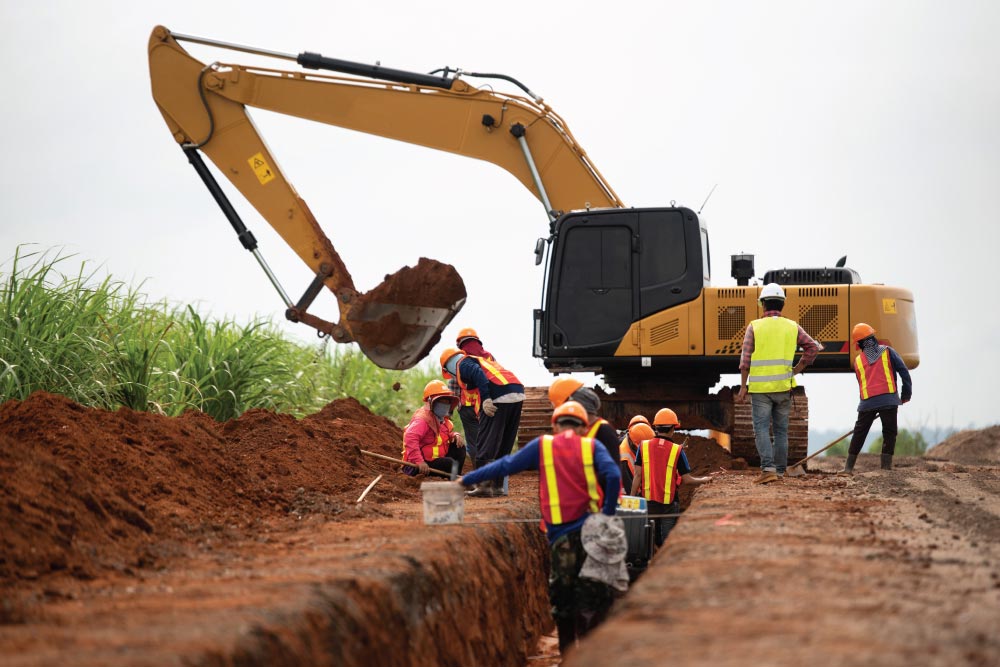
After the Grenfell Tower fire tragedy, Dame Judy Hackitt was asked to carry out a review of building regulation and fire safety. In her report, she identified a range of areas that needed to be reformed. As part of the implementation of these reforms was the passage of the Building Safety Bill which established a new governmental body: the Building Safety Regulator (BSR).
The body was officially launched at the start of 2001, operating under the Health and Safety Executive (HSE). It will be some time before the BSR and enforcement of the bill will be in full effect. But changes that will significantly impact the construction industry are on the way. A year on from the creation of the body, let’s review what it intends and what exactly the impact will be on construction projects.
Aim & Focus of the BSR
The Building Safety Regulator has a simple remit: to improve the safety and performance of high-risk/high-rise buildings. This is to ensure an event like Grenfell never occurs again. High-rise buildings are buildings which are 18 metres or seven storeys or more and contain at least two residential units.
In order to meet its goals, the regulator aims to increase competence amongst industry professionals, as well as take the lead in implementing the new regulatory changes. The BSR hopes this will drive a step change across the industry that lifts performance throughout the lifecycle of buildings – through their design, construction, operation and maintenance.
Currently, the Building Safety Bill only applies in England. Scotland and Wales are looking at similar ways to introduce changes to building and fire safety.
Building Safety Act Training
Our Building Safety Act Training programme gives an overview of the Act, including key roles, compliance requirements and updated safety standards in building design, construction and maintenance.
More Accountability for Duty Holders
In order to help improve attitude and performance across the industry, duty holders will be held to a higher level of accountability. The new regime introduces a much more stringent regulatory framework which will shift the balance away from an over-reliance on regulators to check that things are right.
The responsibility for managing risk and ensuring safe and good quality buildings instead will fall to those that create the risk and are responsible for building and managing these buildings. The regulator has stated it will use an evidence-based approach to both engage and intervene with duty holders.
The BSR would like to see residents as key players in helping to manage building safety risks. Accountable persons or building owners will be required to have an engagement strategy to involve residents and flat owners in this process.
The Golden Thread & Gateways
In her report, Dame Judy Hackitt stated that an essential element missing from building safety is ‘the golden thread’. In simple terms, this highlights the need for accountability in building safety. In practical terms, this will be facilitated by the use of what the BSR calls Gateways. Let’s look at how this works.
What Exactly is ‘the Golden Thread’?
The golden thread was described as “both the information that allows you to understand a building and the steps needed to keep both the building and people safe, now and in the future”.
So, for example, consider a vital piece of fire protection equipment: the fire door. Over the lifecycle of a fire door, its manufactured, certified, procured, installed, used, maintained and inspected. At each stage, a competent person needs to do their job right. And they need to document that they have and how.
To ensure safety, this ‘golden thread’ of competency plus evidence needs to connect every stage of the fire door’s life. So that when a fire door inspector arrives to inspect the door, they have the information they need to determine whether or not that door can do its job of saving lives and protecting property.
What Are Gateways?
Gateways are a vital tool the BSR will use to ensure that the safety risks of buildings throughout a building’s lifecycle.
Gateway 1: This gateway covers the planning stage of the building. Gateway 1 will, for the most part, make use of existing permission processes. When buildings are being planned, applications must clearly demonstrate that fire safety has been adequately addressed and included.
The planning process should focus on relevant areas such fire response, emergency issue response and water supply, as well as certain areas of fire safety. In the future, the BSR will provide assistance to Local Planning Authorities in conducting the approval process.
If a high-rise building is put under construction without passing through Gateway 1, the BSR has the authority to issue a stop notice.
Gateway 2: This gateway spans the pre-construction phase. In order to pass Gateway 2, the BSR must be satisfied that the design of the building meets requirements of functionality under the Building Regulations. Duty holders must submit relevant safety information to the body to demonstrate, that once complete, the building will be compliant.
Gateway 2 bolsters existing building control for plans approach and build on the existing building regulatory framework. An important difference is that previously a developer and builder could choose their building control body. This could be from the private sector or local authority.
Going forwards, for high-rise buildings the BSR will be the building control body.
Buildings will not be able to move forward to the construction phase until after the BSR has approved the building control application.
Gateway 3: This gateway comes into effect when construction of the building is complete. At this point, the BSR will assess if the work was completed in line with Building regulations. Evidence must be submitted to the BSR. If everything is in order, a completion certificate will be issued.
Addressing Existing Buildings
An absolutely new area that the Building Safety Bill brings about are the new duties and responsibilities on occupied high-rise buildings. These duties apply to buildings which are 18 metres/7 storeys with two or more residential units, as well as buildings which are mixed use. Mixed use buildings are those that combine residential housing with commercial properties.
Under the bill, there is a duty to take all reasonable steps to prevent fire spread and structural failure. You must also limit the consequences were these events to occur.
Building Registration
It is expected that duty holders, or the accountable person, will be required to register existing high-risk buildings and provide certain information to the BSR. Duty holders will be asked to apply for a building assessment certificate. Part of that application will comprise a safety case report.
This will be a summary that demonstrates how the duty holder is going to manage the fire and structural risks associated will their building, both now and into the future.
This provision will affect an estimated 13,0000 buildings.
What is a Safety Case & How Do they Work?
The government has suggested that a safety case is ‘a structured argument, supported by a body of evidence that provides a compelling, comprehensible, evidenced and valid case as to how the Accountable Person is proactively managing and controlling fire and structural risks.’
The concept of what a safety case is in practical terms and how it will work have yet to be established. However, in September of 2021 the BSR did publish a list of Safety Case Principles that can be found on the HSE website.
Mandatory Occurrence Reporting
Mandatory Occurrence Reporting is a system under that bill that requires reporting of what are called ‘structural and fire safety occurrences’. Those who hold duties in building design and construction and accountable persons will be legally required to have in place process for conducting this type of reporting.
Secondary legislation is expected to list what types of occurrences are to be reported. An online portal will be established to facilitate this process.
When Does the Building Safety Bill Come into Force?
The Building Safety Bill is set to become law in stages. It is expected to receive Royal Assent at some point in early- to mid-2022. Royal Assent means that the Queen will formerly agree to make it an Act of Parliament, or law.
After this, various provisions of the bill will come into effect over the coming months and years. A year after it receives Royal Assent, various amendments to the Regulatory Reform (Fire Safety) Order 2005 will come into force, along with other changes such as a strengthening of the Architect’s Registration Board, stricter restrictions controlling the regulation of construction products and the establishment of a Residential Panel.
Factors that will have a greater impact on both builders and the duty holders are expected to come into force in late 2023-early 2024. This includes Gateways 2 and 3, Mandatory Occurrence Reporting and duties for the accountable person.
Summary
Those involved in the construction of high-risk, high-rise buildings, as well as those who manage or hold duties in respect to them, should pay close attention to the coming regulatory changes under the Building Safety Bill.
The newly established BSR has outlined key areas of focus and laid out its general scope for us. It has a broad remit to bring about much needed safety reforms in the construction sector. And the body also is seeking to work closely with duty holders and industry professionals as it comes up to speed. This will help ensure its success. However, more practical details regarding implementation have yet to be determined.




















